
By Angelo Randaci, Earth’s Ally Horticulturist
Angelo’s passion for plants has led him to explore many areas of horticulture including research, grounds management, technical training, design and nursery management.
Growing plants indoors is a way to not only extend the gardening season throughout the year but is also a way to bring the beauty and energy of nature into your home or work environment. Plants are terrific companions for indoor spaces because they create multi-dimensional effects from fragrance and visual attractiveness to clean air quality. Plants give off oxygen and take up carbon dioxide, so they are perfect air purifiers. The symbiotic relationship we can have with our houseplants makes them significant companions for indoor spaces.
Houseplants are often our first introduction to larger-scale outdoor gardening. Through them, we develop an emotional connection that helps us understand the power of nature. Houseplants bring seasonal color, warmth, and beauty into our homes, especially during winter months when we are confined indoors. If you are thinking about adding houseplants or already have some in your home, here are some tips on how to keep them healthy.
Let’s begin with plant selections. To succeed in growing houseplants, we must understand the individual growing requirements. All plants have great visual appeal but can have vastly different growing requirements. Before purchasing a plant on impulse, research its individual needs.

Tip 1: Houseplants as Welcomed Guests
Research the plant you wish to buy beyond the information given on the plant label to make sure it is a good fit for you. Learning a bit of vital information could make your plant choice a winner or a deal-breaker. There are many types of houseplants and some basic research can go a long way to finding the best one for you.
A few questions to consider are:
- Is it toxic to people or pets?
- What are the light and water requirements?
- Will it require more humidity than my home naturally has?
- Does it go through a dormancy period?
- How large will it eventually become? Does it have a flower?
How will it fit into my style and design?
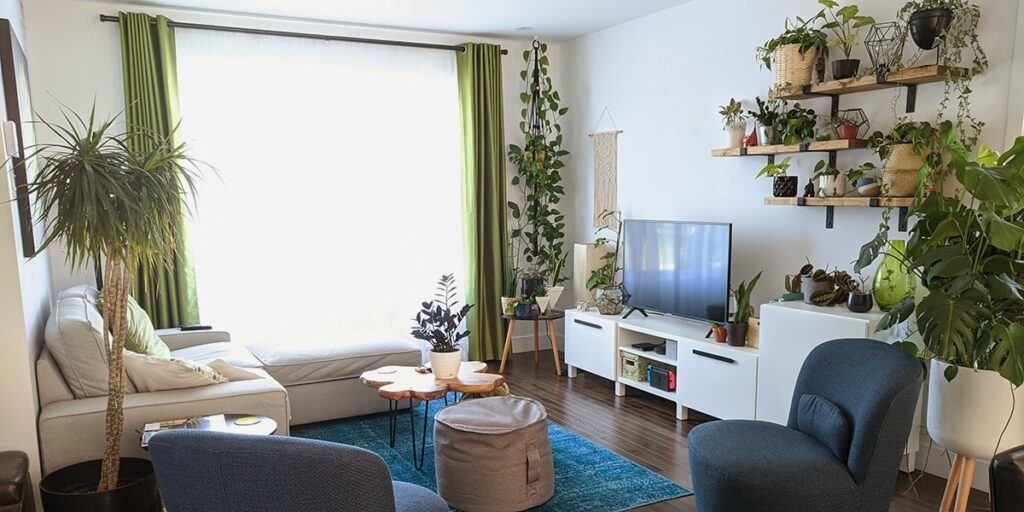
Tip 2: Houseplants and Light
House plants, like outdoor plants, prefer areas where they will receive the conditions needed for optimal plant growth. It’s simply a matter of finding the right spot for each plant. First, observe closely the specific areas of your home where you want to add plants. If placing a plant on or near a window, what is the light exposure and are there any other factors to consider?
- East-facing windows that receive morning sun without obstructions (such as buildings, blinds, etc.) are good choices for most houseplants and will provide even brighter light during the winter months.
- North-facing windows, on the other hand, consist of mostly indirect light. They are good choices for lowlight and indirect light houseplants such as Chinese evergreen (Aglaonema sp.), pothos (Epipremnum aureum), and snake plants (Sansevieria sp).
- Both south- and west-facing windows will accept the higher light needs of jade plants, aloe, and coleus.
- West-facing windows will present the brightest of all exposures.
Move your plants around to different light exposures to see where your plants do best.
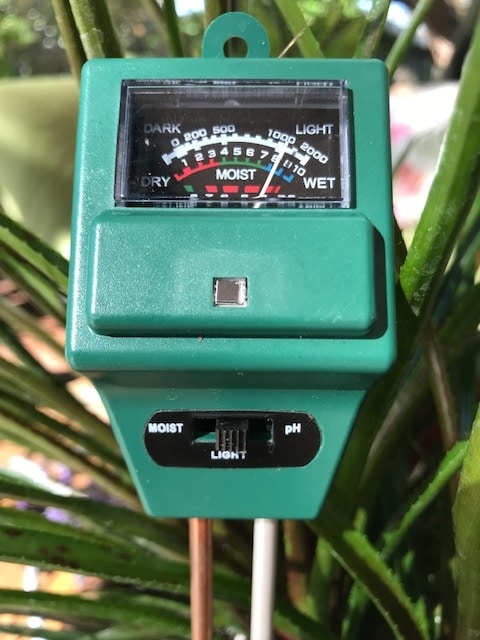
Invest in a basic hand-held light meter.
There is a straightforward way to determine your plant’s light needs wherever you decide to place plants. The terms generally used are low, medium, and high to describe light levels. These however are only general terms. Hand-held light meters are inexpensive with the basic ones costing approximately $13. A light meter helps take the guesswork out of determining the amount of light in any given area. Light meter units are measured in foot candles, which are approximately the brightness of one candle, one foot away. Measuring the number of footcandles gives us actual numbers to go by.
- Low light: An area receiving 25–100-footcandles.
- Medium light: An area receiving 100-500 footcandles.
- High light: An area receiving 500-1000 footcandles.
Light intensity at a window varies depending on the time of year and where your window is located. Simply point the meter where you need a reading and match the number of footcandles on your meter to the light needs of your houseplant.
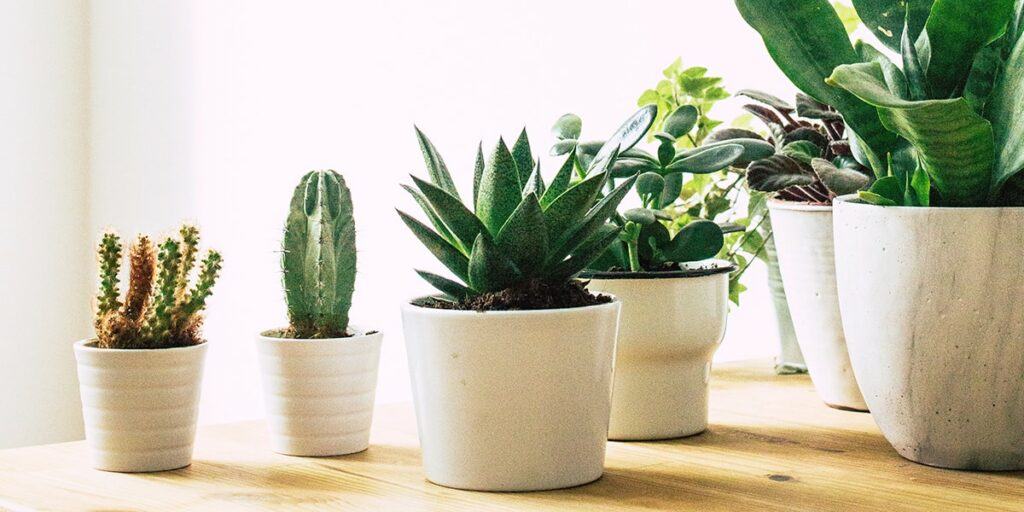
Tip 3: Container Choices and Repotting Houseplants
While you look at your plant every day, you will also be looking at your container, so make your container a key element in your home. Make sure your container has drainage holes. If it doesn’t, place your plant in a container with drainage holes inside your decorative one that is slightly larger.
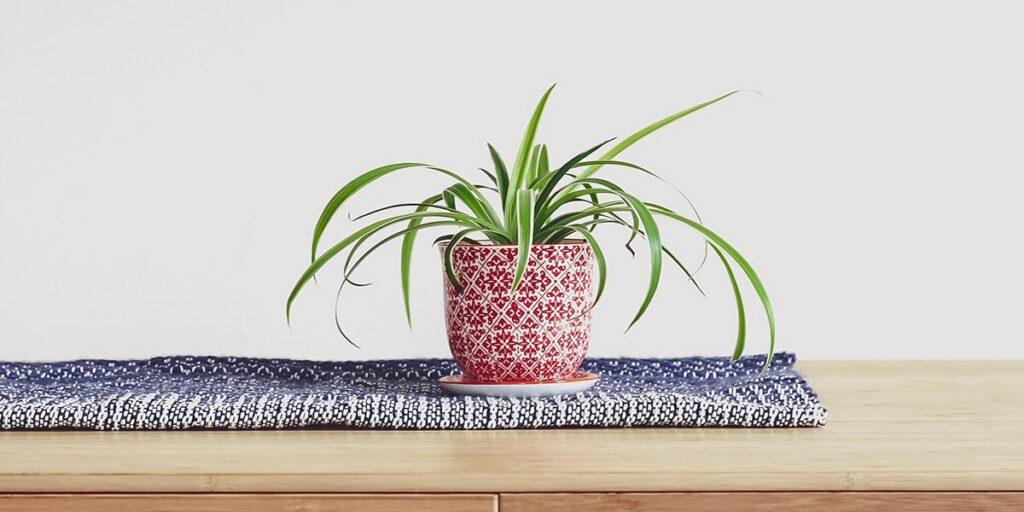
Tip 4: Low-Maintenance Houseplants
Choose your houseplants wisely. Begin with easy, almost fool-proof plants that thrive in the widest environmental conditions in the home. Topping this partial list are ZZ plants (Zamioculcas zamiifolia), snake plants (Sansevieria trifasciata), cast-iron plants (Aspidistra elatior), pothos (Epipremnum aureum), philodendrons, Swiss-cheese plant (Monstera deliciosa), and spider plants (Chlorophytum comosum).
Many succulents will survive the home environment as well if given bright light. As you build confidence, you can add more difficult to grow plants such as orchids, elephant’s ear, prayer plants, miniature roses, and African violets. Pair plants together that enjoy the same cultural requirements for ease of care.
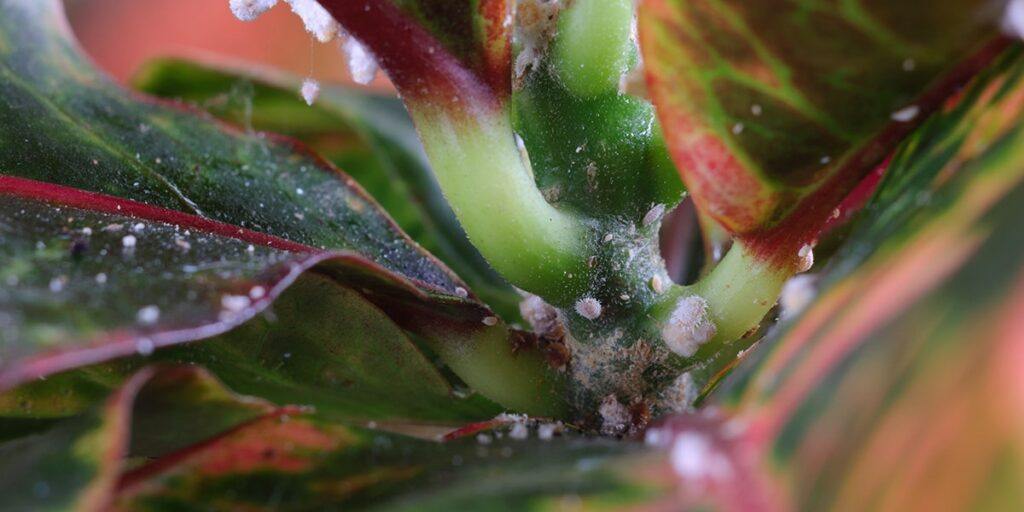
Tip 5: Houseplant Pests
Dust the leaves of smooth foliaged plants by washing them in the shower and letting the leaves dry off before taking them back to their place. Do not wash the leaves of plants with fuzzy leaves. Cut off brown or dead leaves. When cutting off brown areas, follow the shape of the leaf. Give plants a turn once a week to keep even exposure to light.
Watering houseplants properly is part of your general maintenance. Overwatering plants is the number one cause of plant failure. Using a well-draining potting soil mix along with a container with ample drainage will alleviate many over-watering problems. Consult a plant care guide for specific watering needs and techniques for individual species. If you have an interest in a certain houseplant, consider joining a plant society. Plant societies consist of enthusiasts dedicated to sharing information about plants and will provide the latest information based on their experiences.
Inspect your plants often for spider mites, mealybugs, and aphids. The main diseases are powdery mildew, leaf spots, and root rots. Treat with a natural pest and disease control when you find a problem or apply preventively if you know your plant is prone to a certain problem. Earth’s Ally 3-in-1 Plant Spray effectively controls soft-bodied insects and common plant diseases. It can be used on your houseplants both preventively and curatively.
We’d love to hear how Earth’s Ally is helping you care for houseplants! Share your experience and stay connected with the #EarthsAlly community on Facebook, Instagram and Twitter for access to our latest blog posts, giveaways and exclusive promotions.
